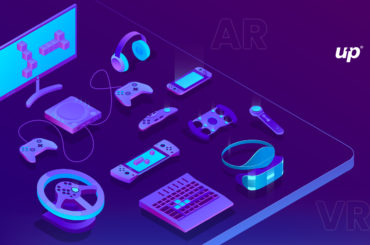 Augmented Reality (AR) has rapidly transitioned from a futuristic concept to a powerful tool that is reshaping how we interact with the world around us. With the ability to overlay digital information onto the real world, Augmented Reality is opening new possibilities for tech enthusiasts, developers, and businesses alike. This blog post will explore the potential of augmented reality builders and how they are empowering users to create immersive and interactive experiences.
Augmented Reality (AR) has rapidly transitioned from a futuristic concept to a powerful tool that is reshaping how we interact with the world around us. With the ability to overlay digital information onto the real world, Augmented Reality is opening new possibilities for tech enthusiasts, developers, and businesses alike. This blog post will explore the potential of augmented reality builders and how they are empowering users to create immersive and interactive experiences.
Whether you’re a seasoned AR developer or a tech-savvy startup looking to dive into the realm of augmented experiences, this comprehensive guide will provide you with a deep understanding of AR builders and their transformative capabilities.
The Rise of Augmented Reality Technology
The advent of AR technology has been nothing short of revolutionary, offering a blend of the digital and physical worlds. This unique characteristic makes AR not just an impressive technological feat but also a versatile tool for various industries such as gaming, education, healthcare, and retail.
It is the allure of creating tailored, engaging experiences that has captured the imagination of tech enthusiasts. The integration of AR into smartphones, tablets, and wearable technology has made it more accessible than ever, paving the way for widespread adoption and innovation.
What is a no-code Augmented Reality Builder?
An AR builder is a platform or software that allows users to design and deploy AR experiences. These tools come with a set of functionalities that enable the creation of AR without the necessity for deep coding knowledge. With intuitive interfaces and drag-and-drop features, AR builders are democratizing the development of AR applications.
Features to Look For in an AR Builder
When selecting an AR builder, there are several key features to consider:
- User-friendly Interface: The builder should be designed with simplicity in mind, ensuring that both novices and professionals can navigate it effectively.
- Cross-platform Compatibility: It should support development across multiple devices and operating systems to reach a wider audience.
- Robust Tracking and Recognition: High-quality tracking ensures that AR objects are displayed accurately within the user’s environment.
- Interactive Elements: Adding interactive components, like touch and gesture recognition, enhances user engagement.
- Content Management: It should offer a simple process for inserting and updating multimedia content.
- Customization: The tool should allow for customization to accommodate brand-specific designs and functionalities.
How AR Builders are Influencing Startups and Tech Enthusiasts
For tech enthusiasts and startups, AR builders serve as a canvas to turn creative concepts into reality. The implications of this are significant, enabling rapid prototyping and experimentation without the overhead of traditional development processes. This agility is particularly beneficial for startups that need to quickly validate ideas and stand out in competitive markets.
Case Studies: Successful AR Projects
To understand the practical applications and benefits of AR builders, let’s delve into a few success stories:
- E-Commerce AR: A furniture startup utilized an AR builder to create an application that lets customers visualize how different pieces of furniture would look in their own homes.
- Interactive Learning: An educational technology company developed an AR-based app that brings historical figures and events to life for an engaging learning experience.
- Maintenance and Repair: A tech startup created an AR manual for machinery and equipment, simplifying complex repair tasks for technicians.
Getting Started with Augmented Reality Builders
Ready to take the plunge into creating your own AR experiences? Here are the initial steps to get started:
- Choose the Right AR Builder: Assess various platforms based on your project requirements, desired features, and budget.
- Outline Your AR Experience: Clearly define what you want to achieve with your AR application and sketch out user flows and interactions.
- Create and Import Content: Use the builder’s tools to create or import 3D models, animations, images, and videos into your project.
- Test and Iterate: Test your AR application across different devices and use feedback to enhance and refine the experience.
- Deploy and Monitor: Once satisfied, deploy your AR app and monitor its performance for further improvements or scaling.
Conclusion
The emergence of augmented reality builders marks a significant milestone in the AR landscape. By simplifying the development process, these tools are enabling tech enthusiasts and startups to push the boundaries of innovation. As AR technology advances, the range of possibilities it offers expands even further, promising a future peppered with engaging, immersive experiences that were once only imaginable.
For tech enthusiasts keen on exploring the frontiers of digital reality, now is the perfect time to harness the power of AR builders. Startups, on the other hand, stand to gain a competitive edge by embedding AR in their strategies to captivate customers and streamline operations. As no-code technology matures with companies like PlugXR taking a significant leap, it will undoubtedly become even more integral to our daily lives. So whether you’re an AR hobbyist or a startup trailblazer, sign up to get started or book a free demo now!







